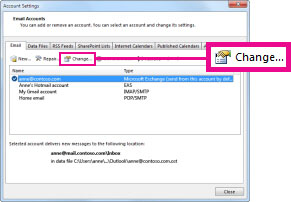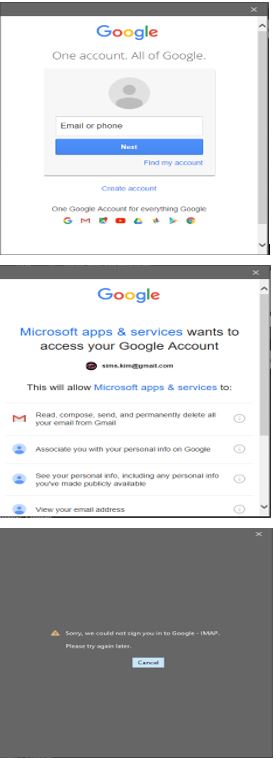Outlook For Mac 2016 Work Offline
Outlook For Mac 2016 Work Offline Free
Course details Get tips, tricks, and keyboard shortcuts to improve your efficiency with Outlook for Mac 2016. In this course, Gini von Courter shares over 100 power shortcuts to help you save time. For more information, see End of support for Office 2016 for Mac. Microsoft Office 2016 - Unmistakably Office, designed for Mac. The new versions of Word, Excel, PowerPoint, Outlook, and OneNote provide the best of both worlds for Mac users - the familiar Office experience paired with the best of Mac. If you already use Office on a PC or iPad. Outlook for Mac provides Exchange connectivity in a Mac environment. It facilitates offline working in an Exchange environment. Outlook for Mac facilitates offline working in an Exchange environment. Synchronization between the server and client application is done so that whenever there is any modification in the Server-side or client-side, the change gets updated on the.
Original KB number: 2800895
We do not recommend that you change the default location of your Profile folder for Microsoft Outlook 2016 for Mac, or your Identity folder for Microsoft Outlook for Mac 2011 to an external hard disk or to a network. Additionally, using a mail identity or profile that is located on an external hard disk or on a network is not supported in either version of Outlook for Mac.
More information
Calendar invites sent from Microsoft Outlook to Mac Outlook is not working: Calendar Printing Assistant: 2: Apr 28, 2020: P: Outlook for Mac - emails are not sent out beginning last week: Using Outlook: 1: Apr 10, 2020: D: Outlook 2016 Migrate 'On My Computer' (local storage) Calendar from Mac Outlook to Exchange Account: Using Outlook: 5: Dec.
Outlook 2016 for Mac caches your mail items in a profile in your home folder at the following location:
~/Library/Group Containers/UBF8T346G9.Office/Outlook/Outlook 15 Profiles
Outlook for Mac 2011 caches your mail items in an identity in your home folder at the following location:
~/Documents/Microsoft User Data/Office 2011 Identities
Like Microsoft Entourage for Mac 2008, Outlook 2016 for Mac and Outlook for Mac 2011 are intended to be purely locally cached mail clients. Changing the location or using a mail identity that is located on an external hard disk or a network is not supported.

 -->
-->Applies to:Office for Mac, Office 2019 for Mac
To use Office for Mac in your organization, it needs to be activated. How you activate Office for Mac depends on whether your organization has an Office 365 (or Microsoft 365) plan or has a volume license agreement. But in both cases your users won't have to enter any product keys.
Note
If you're an Office user trying to activate a personal copy of Office for Mac, follow these instructions instead of reading this article.
Activate Office 365 versions of Office for Mac
If your organization has an Office 365 (or Microsoft 365) plan, make sure you assign each user a license for Office before you deploy Office for Mac to your users. If you don't assign a user a license, you can still deploy Office for Mac to that user, but the user won't be able to activate and use Office.
For Office 365 (and Microsoft 365) customers, Office for Mac activates by contacting the Office Licensing Service on the internet. The Office Licensing Service keeps track of which users are licensed and how many computers they've installed Office on.
After you deploy Office for Mac, your users are prompted to activate Office the first time they use it. Make sure users are connected to the internet when they activate Office.
On the Sign in to Activate Office screen, users should select Sign In, and then enter their email address and password. After they sign in, users may see an alert asking for permission to access the Microsoft identity stored in their keychain. They should select Allow or Always Allow to continue.
While you can deploy Office for Mac for your users, your users need to sign in and activate Office for Mac for themselves. That's to ensure that the Office Licensing Service properly associates Office for Mac with the correct licensed user.
A program on the Mac, the Office365ServiceV2 daemon, runs once a day to check the user's subscription status. The computer must be connected to the internet to contact the Office Licensing Service. If the computer can't contact the Office Licensing Service after nine days, the user sees a warning message when working in an app.
If the computer can't contact the Office Licensing Service after 30 days, Office goes into reduced functionality mode. This means that the user can open, view, and print existing documents in an Office app, but can't create or edit documents. The user also sees a message in the app that most features aren't available. After the user connects to the internet and the subscription status is verified, all the features of Office are available again.
For each user that you've assigned a license to, you can deploy and activate Office for Mac on up to five Macs for the user. If you need to provide Office for Mac on a sixth computer for a user, you need to deactivate an existing installation first. Deactivating an installation doesn't remove Office for Mac from the computer. Instead, the installation goes into reduced functionality mode.
Users can sign into the Office 365 portal to deactivate an existing installation by going to My account > Install status > Manage installs. Or, you can deactivate an installation as an Office 365 administrator. Sign into the Office 365 portal, go to the admin center, and then go to Users > Active Users. Select the user, and then choose Edit for the Office installs property of the user.
Activate volume licensed versions of Office for Mac
To activate a volume licensed version of Office 2019 for Mac, use the Volume License (VL) Serializer. You can download the VL Serializer by signing into the Volume Licensing Service Center (VLSC). You run the VL Serializer on each computer. By doing this, your users won't see any activation prompts when they first open Office 2019 for Mac.
For more information, see Overview of the Volume License (VL) Serializer.